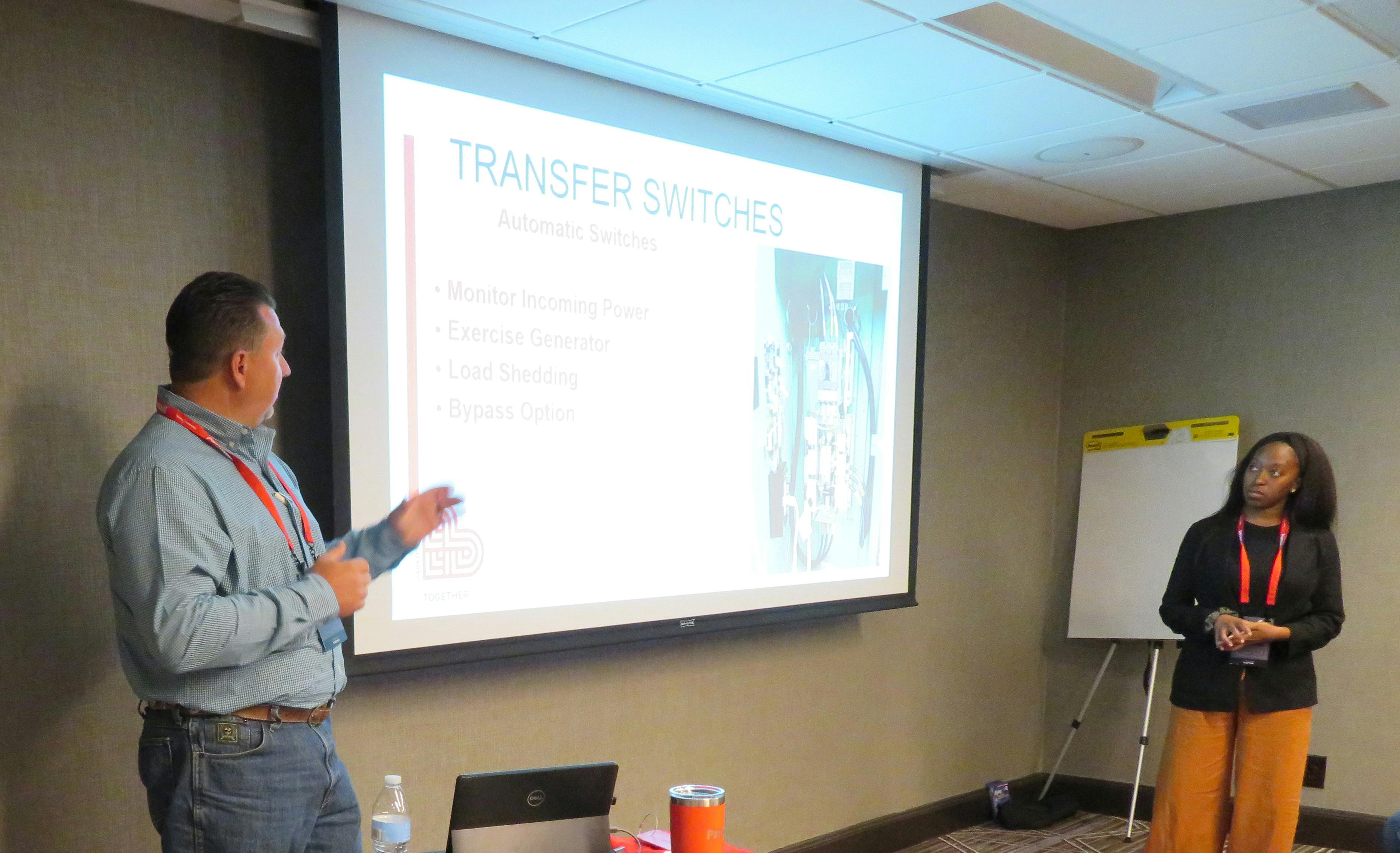University of Parkhill 2022: Generating Interest in Generators
Category: Engineering
Written By: Valerie Edgren
Date: June 1, 2022

 Smart switches, color-coded smart connectors, and harmonic distortion bring up past episodes of “Star Trek” in most peoples’ minds.
Smart switches, color-coded smart connectors, and harmonic distortion bring up past episodes of “Star Trek” in most peoples’ minds.
But for electrical engineers, knowing what’s new and what’s best in generator projects is vital to their client’s projects.
Shaun Tidwell, PE, Parkhill associate and electrical engineer, and Apphia Wilson, a Parkhill engineering technician, both representing the firm’s Water Resources Practices, emphasized this importance during “Generating Interest in Generators” at the University of Parkhill 2022. The high-level overview helped attendees be informed before meeting with clients who have generator questions. It also served as a conduit for younger engineers and those who are not experts to deepen and develop their knowledge.
Finding the correct generator size for your client’s project, for example, takes much time and consideration. Reflecting one of Parkhill’s values, that of Deepening Credibility, Apphia said Parkhill employees owe it to their clients to refrain from becoming “yes” men.
 “Making sure we have the knowledge required to effectively address our clients' needs should always be at the forefront of whatever we do,” Apphia said.
“Making sure we have the knowledge required to effectively address our clients' needs should always be at the forefront of whatever we do,” Apphia said.
Shaun said it used to be a rule of thumb to use a specific size generator for a particular type of project.
“That doesn’t apply anymore because of changes in the past 10-plus years in today’s generator design and sizing,” he explained.
“We wanted to show the obstacles you can face,” Shaun said. “There are a lot of pieces that go into that puzzle.”
Main points from the presentation:
- Many of the newer variable frequency drives (VFDs) necessitate increasing the size of the generator to handle some of the other harmonic distortions generated from a VFD.
- Know whether two motors will be running simultaneously or whether motors will need to handle heaters, air conditioners, or any other loads over which you may not have control.
- More design considerations would be elevation temperature, multiple water heaters, or a water or sewer dewatering system.
- Determine what kind of transfer switch is needed to switch between power sources. Color-coded cam-lock-type connectors are increasing in popularity.
- “Smart” automatic transfer switches are used in critical locations where you need power faster. If the power drops below a certain threshold for more than a certain amount of time, for example, it will communicate with the generator to start it.


